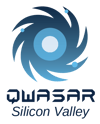Becoming a full-stack developer can be an exciting and fulfilling career choice for those who are interested in technology and programming. Fullstack development involves the creation of complete web applications, including both the client-side user interface and the server-side backend. As a full-stack developer, you must be proficient in several different technologies, including HTML, CSS, JavaScript, server-side programming languages, databases, and more.
If you're interested in becoming a full-stack developer but have no prior experience, you might be wondering where to start. In this article, we'll walk you through the steps to become a full-stack developer, even if you have no previous experience in programming. We'll cover the basics of full-stack development, the skills to acquire, and the tools and resources available to help you on your journey.
The demand for full-stack developers is growing rapidly, as more and more companies require full-stack developers to create complex web applications. With the right training, practice, and resources, you can become a full-stack developer and enjoy a rewarding and challenging career in the tech industry. Whether you're just starting out in your career or looking to make a career change, this article will provide you with the knowledge and resources you need to become a successful full-stack developer.
Understanding the Role of a Full-Stack Developer
As the name suggests, a full-stack developer is responsible for creating the entire stack of a web application, including the frontend, backend, and everything in between. This means that full-stack developers need to be proficient in multiple programming languages, technologies, and frameworks.
The technical skills required for full-stack development include knowledge of HTML, CSS, JavaScript, and React.JS for frontend development (possibly also Next.JS, Typescript, Vue, JQuery, Angular, etc.), as well as one or more server-side programming languages such as Python, Ruby, Java, or JavaScript. Full-stack developers also need to know how to work with databases, APIs, and other backend technologies.
In addition to technical skills, full-stack developers also need to have a strong understanding of user experience (UX) and user interface (UI) design principles. They need to be able to create responsive and visually appealing user interfaces that are intuitive and easy to use.
In many cases, full-stack developers also need to have project management and team collaboration skills, as they may be responsible for coordinating with designers, developers, and other team members to complete a project.
The role of a full-stack developer is complex and multifaceted, requiring a broad range of technical and non-technical skills. However, for those who are willing to put in the time and effort to learn and master these skills, full-stack development can be a rewarding and challenging career path.
Getting Started on Becoming a Full Stack Developer
If you're interested in becoming a full-stack developer with no experience, the first step is to do some research and familiarize yourself with the technologies and programming languages used in full-stack development.
One of the most popular programming languages for full-stack development is JavaScript, as it can be used for both frontend and backend development. Other popular backend languages include Python, Ruby, PHP, and Java. As for frontend development, HTML and CSS are the building blocks of web development, however, other languages such as React, Swift, Angular, and Vue are also common and prevalent.
Once you have a basic understanding of the technologies involved, you'll need to choose a programming language to learn first. You may want to consider learning JavaScript first, as it is versatile and widely used in full-stack development.
After choosing a language to focus on, you'll need to select a framework to work with. A framework is a set of tools, libraries, and conventions that help you develop web applications more efficiently. Some popular frameworks for full-stack development include React, Angular, Vue.js, Node.js, and Django.
It's important to note that learning a framework is not the same as learning a programming language. Frameworks are built on top of programming languages and provide a way to structure and organize your code.
Once you've chosen a language and framework to work with, you can start learning the basics of full-stack development. There are many online resources, tutorials, and courses available to help you get started, including online learning platforms like Qwasar.
By following these steps and investing time in learning and practicing, you can begin your journey toward becoming a full-stack developer with no prior experience.
Learning the Basics
Once you have chosen a programming language and framework to work with, you can begin learning the basics of full-stack development. Here are some key concepts and skills to focus on:
- HTML and CSS:
HTML is the language used to create the structure of web pages, while CSS is used to add style and layout. You should learn the basics of HTML and CSS to create simple web pages and understand how they work together. - JavaScript:
As mentioned earlier, JavaScript is a versatile programming language used for both frontend and backend development. You should learn the fundamentals of JavaScript, including variables, loops, and functions, and how to use JavaScript to interact with the DOM (Document Object Model) and create dynamic web pages. - Backend development:
To create a complete web application, you need to learn how to build the backend, which is the server side of the application. You should choose a server-side language, such as Python or JavaScript, and learn how to build RESTful APIs (Application Programming Interfaces) to interact with the front-end. - Databases:
Web applications often need to store and retrieve data, so you should learn how to work with databases. Popular databases used in full-stack development include MySQL, MongoDB, and PostgreSQL. - Version control:
Version control allows you to track changes to your code and collaborate with other developers. You should learn how to use version control tools like Git and GitHub.
There are many resources available to help you learn the basics of full-stack development, including online tutorials, books, and courses. You may also want to build simple projects on your own to practice and apply what you have learned.
.jpg?width=7952&height=5304&name=thisisengineering-raeng-64YrPKiguAE-unsplash%20(1).jpg)
Building Projects and a Technical Portfolio
The only way to really gain experience and develop your skills as a full-stack developer is by building full-stack software projects. Projects provide an opportunity to put your theoretical knowledge into practice and develop hands-on experience with different technologies and tools.
Building projects are an essential part of becoming a full-stack developer. It allows you to learn by doing and reinforces your understanding of key concepts. It also helps you to build a portfolio of work that demonstrates your skills and experience to potential employers.
Projects also provide an opportunity to practice working with different technologies and tools. This is particularly important for full-stack developers who need to be proficient in multiple programming languages and frameworks. By working on projects, you can gain experience with different tools and technologies and develop a deeper understanding of how they work together.
Examples of Projects for Beginners
If you're just starting out as a full-stack developer, there are several projects you can work on to gain experience and build your skills. Here are some ideas to get you started:
1. Build a Simple Blog
A blog is a great project for beginners because it's relatively simple, but still requires a range of skills to build. You can start with a basic HTML and CSS layout and then add features like comments, tags, and search functionality using a backend language like Node.js.
2. Create a To-Do List App
A to-do list app is another simple project that can help you learn the basics of full-stack development. You can create a simple frontend using HTML, CSS, and JavaScript, and then use a backend language like Python or Ruby to store and retrieve the data.
3. Develop a Weather App
A weather app is a more advanced project that can help you learn how to work with APIs. You can use a frontend framework like React or Angular to build the user interface and then use an API like OpenWeatherMap to retrieve weather data.
4. Build an E-Commerce Website
An e-commerce website is a more complex project that can help you develop your full-stack development skills. You can use a frontend framework like React or Vue.js to build the user interface and then use a backend language like Ruby on Rails or Node.js to handle payments, orders, and inventory management.
Building projects are an essential part of becoming a full-stack developer. It allows you to gain experience and develop your skills by putting theory into practice. By working on different projects, you can gain experience with different languages.
Building Projects and a Technical Portfolio
Once you have learned the basics of full-stack development, it's time to go beyond and start building more complex projects. Here are some tips on how to advance your skills and knowledge as a full-stack developer:
- Work on real, open-source projects
One of the best ways to learn is to work on real-world projects. You can find open-source projects on GitHub or other platforms and contribute to them. Alternatively, you can work on personal projects that interest you. This will help you apply what you have learned and gain practical experience. - Learn a front-end framework
While learning HTML, CSS, and JavaScript is essential, learning a front-end framework such as React or Angular can help you build more complex and dynamic user interfaces. These frameworks also come with built-in tools for state management, routing, and other features that can help you build more sophisticated web applications. React is in higher demand right now. - Learn a back-end framework
Similar to front-end frameworks, learning a back-end framework such as Express or Django can help you build more robust and scalable server-side applications. These frameworks provide tools for routing, middleware, database integration, and more, which can save you time and effort in building the back-end of your applications. - Design and build a complex application
Identify a real-world problem or opportunity, conceptualize a solution, and construct a robust and scalable application that integrates both frontend and backend technologies. By working on a complex project, you'll gain hands-on experience in tackling challenges, refining your problem-solving skills, and mastering the art of collaboration. In addition, this will enable you to showcase your proficiency in diverse technologies and frameworks, boosting your portfolio and demonstrating your ability to build end-to-end solutions. - Build an application that requires relational databases and/or Object-Oriented Programming (OOP)
This experience will deepen your understanding of data modeling, storage, and retrieval, as well as the importance of scalable and maintainable code design. By implementing relational databases, you'll master the art of structuring data and optimizing complex queries, while leveraging OOP principles will help you create modular and reusable code. Together, these skills will enhance your ability to develop sophisticated, data-driven applications that cater to real-world needs and adhere to industry best practices. - Practice good coding practices
As you develop your skills, it's important to practice good coding practices such as writing clean and maintainable code, commenting your code, and using appropriate naming conventions. This will make it easier for other developers to understand and work with your code, and it will help you write more efficient and bug-free code. - Keep learning and stay up-to-date
Full-stack development is a constantly evolving field, and there are always new tools, frameworks, and technologies being introduced. It's important to stay up-to-date with the latest trends and best practices by reading blogs, attending conferences, and networking with other developers. This will help you stay competitive and ensure that you are using the latest and most efficient tools and techniques in your work.
By following these tips, you can take your full-stack development skills to the next level and become a more proficient and in-demand developer. Remember to keep practicing, learning, and exploring new technologies, and most importantly, have fun while you do it!
Become a Structured Problem-Solver
One of the most important skills for a full-stack developer is the ability to solve problems efficiently and effectively. As a full-stack developer, you will face a wide range of challenges, from debugging code to designing complex systems. Here are some tips on how to become a structured problem solver:
- Break down problems into smaller parts
When faced with a complex problem, it's important to break it down into smaller, more manageable parts. This will help you identify the root cause of the problem and make it easier to find a solution. By breaking down the problem into smaller parts, you can also focus on one issue at a time, which can help you avoid feeling overwhelmed. - Use a systematic approach
Once you have broken down the problem, you can use a systematic approach to solve it. One popular approach is the "divide and conquer" method, which involves dividing the problem into smaller sub-problems and solving each one individually. Another approach is the "top-down" method, which involves starting with a broad overview of the problem and gradually drilling down into the details. - Use data to inform your decisions
When solving problems, it's important to use data to inform your decisions. This can include data about user behavior, performance metrics, or system logs. By using data to inform your decisions, you can make more informed choices and avoid relying on guesswork. - Collaborate with others
Problem-solving is often a collaborative effort, and it's important to work with others to find a solution. This can include working with other developers, designers, or project managers. By collaborating with others, you can gain new perspectives and ideas, and find a solution that works for everyone. - Practice, practice, practice
Like any skill, problem-solving takes practice. You can practice by working on personal projects or contributing to open-source projects. By practicing regularly, you can develop your problem-solving skills and become more confident in your ability to solve complex problems.
By becoming a structured problem solver, you can tackle even the most complex challenges with ease and confidence. Remember to break down problems, use a systematic approach, use data to inform your decisions, collaborate with others, and practice regularly. With these skills, you can become a highly effective full-stack developer.
Systems Design and Software Architecture
As a full-stack developer, it's important to have a solid understanding of systems design and software architecture. Systems design involves designing the architecture of a system, while software architecture involves designing the structure and behavior of software components. Here are some key concepts and skills to focus on when it comes to systems design and software architecture:
- Scalability
A scalable system can handle increased traffic or workload without sacrificing performance. As a full-stack developer, it's important to design systems that can scale as the application grows. This involves understanding how to design scalable databases, using caching and load-balancing techniques, and optimizing code for performance. - Security
Security is an essential aspect of any software application, and it's important to design systems with security in mind. This involves understanding how to implement secure authentication and authorization mechanisms, preventing common security vulnerabilities such as cross-site scripting (XSS) and SQL injection, and using encryption to protect sensitive data. - Microservices
Microservices are a popular architectural approach that involves breaking down an application into smaller, independent services that can be developed and deployed separately. This approach can make it easier to scale and maintain complex systems, but it also requires a solid understanding of distributed systems, service discovery, and communication protocols. - Design patterns
Design patterns are proven solutions to common software design problems. As a full-stack developer, it's important to understand common design patterns such as Model-View-Controller (MVC), Singleton, and Factory. This can help you design more maintainable and scalable software. - Cloud computing
Cloud computing has become an essential part of modern software development, and it's important to understand how to design and deploy applications in the cloud. This involves understanding how to use cloud services such as Amazon Web Services (AWS) or Microsoft Azure, designing cloud-native architectures, and using containerization technologies such as Docker.
By focusing on these key concepts and skills, you can become a highly effective full-stack developer with a strong understanding of systems design and software architecture. Remember to focus on scalability, security, microservices, design patterns, and cloud computing. With these skills, you can design and develop complex applications that meet the needs of users and businesses alike.
Joining a Community
Joining a community of developers is a great way to kickstart your journey toward becoming a full-stack developer. By connecting with like-minded individuals, you'll have access to a wealth of resources, support, and guidance that can help you learn faster and stay motivated throughout your journey.
Here are some benefits of joining a community of developers:
- Networking Opportunities
By joining a community of developers, you'll have the opportunity to connect with people who share your interests and goals. You may find a mentor, potential employer, or even a friend who can help you throughout your journey. - Learning Resources
Communities often offer access to a variety of learning resources such as workshops, webinars, and online courses. You may also be able to find online study groups or local meetups where you can collaborate and learn from others. - Motivation and Support
Learning to code can be challenging and frustrating at times. Being part of a community can help you stay motivated and inspired as you connect with others who are also working towards similar goals. You'll also have access to support when you need it most.
Joining a developer community can help you build a successful career as a full-stack developer. Whether you're looking to network, learn, or find support, there's a developer community out there for you. So, get out there and start connecting with other developers!

Learning From Others
Open-source projects and codebases are excellent resources for aspiring full-stack developers as they provide a unique opportunity to learn from experienced developers. By reviewing code and documentation from these projects, you can see how experienced developers approach coding challenges and learn new techniques and technologies. Additionally, participating in open-source projects can help you gain experience working collaboratively with others, which is an essential skill for full-stack developers.
To get started with open-source learning, it's essential to start small. Begin by finding a project that aligns with your current skill level and interests, and then review the code and documentation to understand how it works. Once you feel comfortable, you can start contributing to the project by fixing bugs or adding new features. This hands-on experience working with others will help you build real-world projects and develop your skills as a full-stack developer.
Remember that asking for help or feedback from the project's community is also an important part of the learning process. Many open-source projects have active communities that are willing to help beginners learn, so don't be afraid to reach out and ask for assistance. Taking advantage of these resources can provide valuable insights, feedback, and experience, which can help you become a successful full-stack developer.
Start Learning Today
Becoming a full-stack developer is an exciting career choice that requires proficiency in several different technologies, including HTML, CSS, JavaScript, server-side programming languages, databases, and more. While it may seem daunting to start from scratch, there are plenty of resources available to help you learn and practice the necessary skills. As the demand for full-stack developers continues to grow, now is a great time to start your journey toward a fulfilling and challenging career in the tech industry. By investing time in learning and practicing, you can become a successful full-stack developer and create complex web applications that make a difference in the world.



